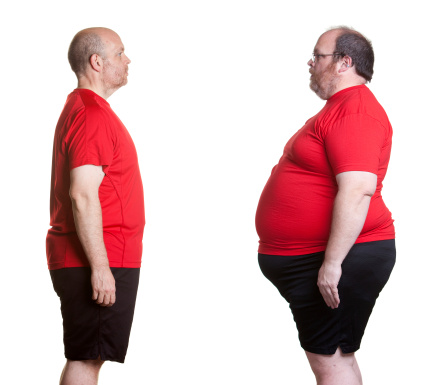Fat – The Truth About Fat and Health
Eat a low-fat, low-cholesterol diet.” Has been stated by many in
the diet community as a way to prevent disease and be healthy.
Most of us have heard this phrase however is misleading.
The total amount of fat in the diet, whether high or low, isn’t
however directly linked to disease.
Fats are part of the natural food chain of humans and we all
need a certain amount of fat to be healthy.
Healthy fats
Bad fats increase the risk for certain diseases and good fats
lower the risk. The key is to make sure your eating the right
fats.
Fats that are actually healthy Are referred to as “essential
fatty acids.” These fats are required for good health and
actually lower risk of heart disease.
For example, the reason oily fish is so good for you is that the
essential fatty acids which can actually help your body burn fat
more efficiently and protect against disease.
The truth about cholesterol
Although it is still important to limit the amount of
cholesterol your eat, dietary cholesterol is not bad on its own
the key with cholesterol is the amount thats in your bloodstream.
High blood cholesterol levels increase the risk of heart
disease, but the average person makes about 75% of blood
cholesterol in their liver; only about 25% is absorbed from
food.
The biggest influence on blood cholesterol level and the risk of
illness is the mix of fats in the diet.
Saturated and unsaturated fats
Fact: Saturated fats raise cholesterol levels and the risk of
heart disease.
They are found primarily in animal sources such as fatty meats,
whole fat dairy products, lard, and shortening.
A recent study showed that people with a high intake of
saturated fat increased their risk of fatal heart disease by 38
percent.
Unsaturated fats however are good for you, lowering cholesterol
and reduce the risk of heart disease.
These fats come primarily from vegetable oils. Examples of
healthy fats include olive, Canola, and soy oils.
While these fats include the essential fatty acids, they are
high in calories and should not be eaten to excess.
The best sources of unsaturated fats are those found in whole
foods such as nuts, unprocessed nut butters, seeds, olives, and
avocados.
These foods are naturally rich in unsaturated fats but also
contribute vitamins, minerals, and dietary fiber.
Knowing if fats are good or bad
There is one simple general rule for checking if a fat is good
or bad:
If a fat is solid at room temperature, like butter or margarine,
its unhealthy, a couple of exceptions are palm and coconut oil.
Solid fats are primarily stored as body fat and increase
cholesterol levels and risk of disease.
Good fats include Safflower oil, sesame oil, and canola oil.
Just a tablespoon a day can give you all the fatty acids you
need.
Trans Fats.
Trans fatty acids are a third group of fats that are common in
processed foods. They are formed when vegetable oils are
“hydrogenated” or turned into a solid fat i.e margarine,
shortening, many deep fat frying oils, and most processed or
fast foods.
Trans fatty acids are bad in two ways
They raise blood cholesterol levels (LDL cholesterol) and lower
the protective HDL particles in the bloodstream.
Only small amounts eaten can increase the rate of heart attacks
dramatically.
Trans fatty acids can be detected by looking at the ingredients
on the packaging of the food. If the words, “partially
hydrogenated oils” are there, the food contains trans fats.
Fats as part of a healthy diet
Your fat intake should be around 20 and 3o percent of total
daily calories, with less than seven percent coming from
saturated fats.
Eat primarily a plant based diet high in vegetables, legumes,
nuts and seeds, fruits, whole grain breads and cereals, and
unhydrogenated vegetable oils.
These foods have the advantage of being are cholesterol-free,
have no animal fats, have dietary fiber and essential fatty
acids.
- DON'T MISS
- Resist that Snack Attack and Keep Your Diet on Track
- Tips for Weight Loss
- Weight Loss with Hoodia Gordonii
- An Introduction To Weight Loss Programs
- Bariatric surgery & early death
- Seven Factors Smoking cigarettes Will be Harmful In order to Health
- Top Diet Plan For 2006
- Hoodia Gordonii – The Hoodia Cactus – Where’d My Appetite Go? My Experience with Pure Hoodia
- Elements of Kids Health
- How I lost 11 Kilograms in 26 days




